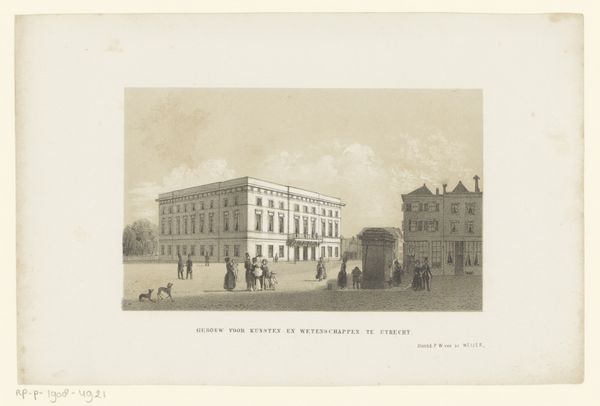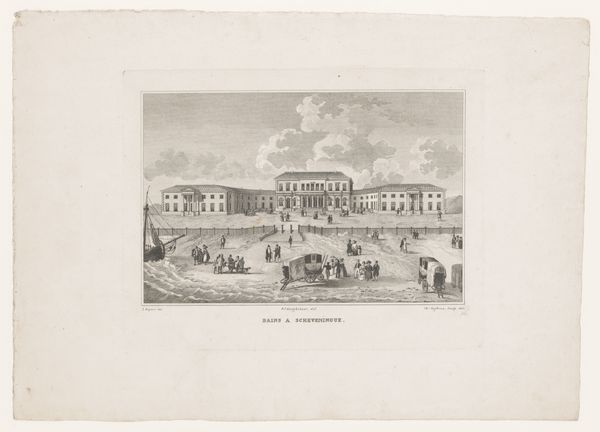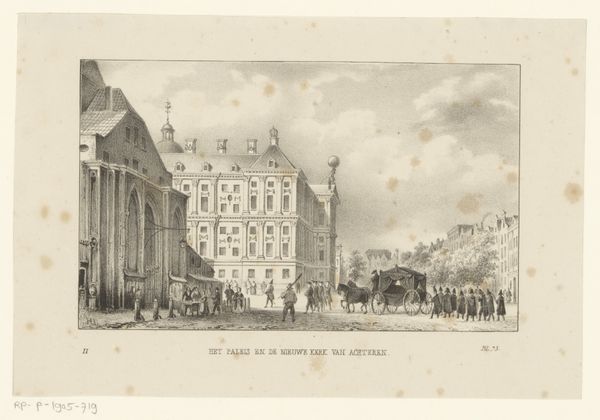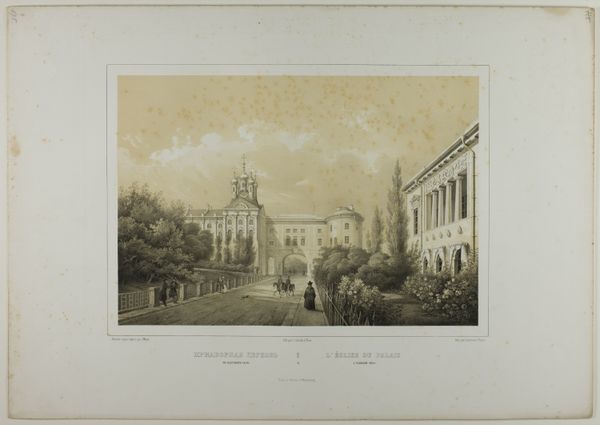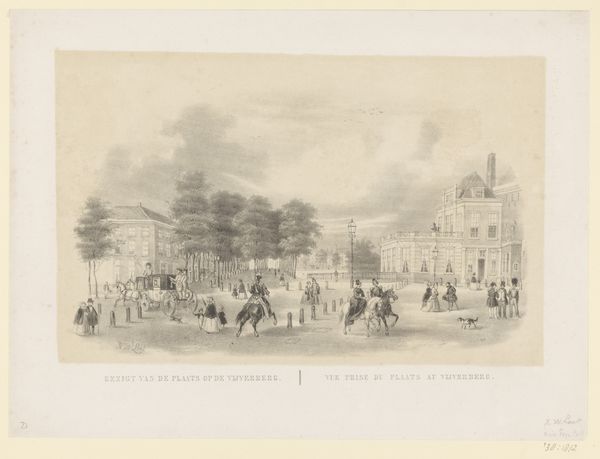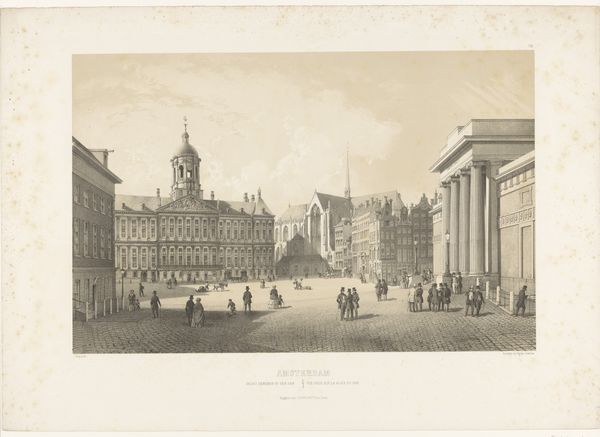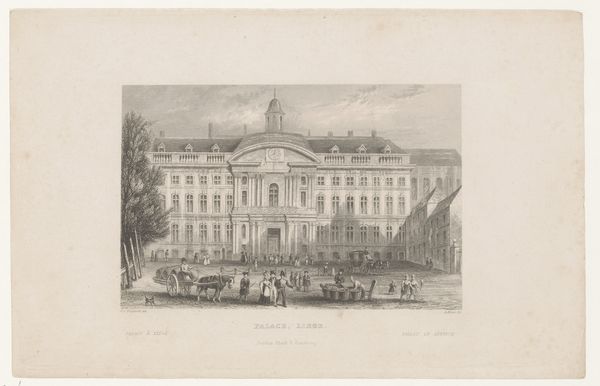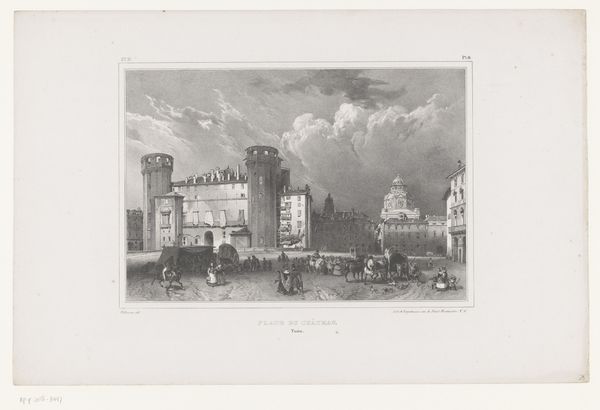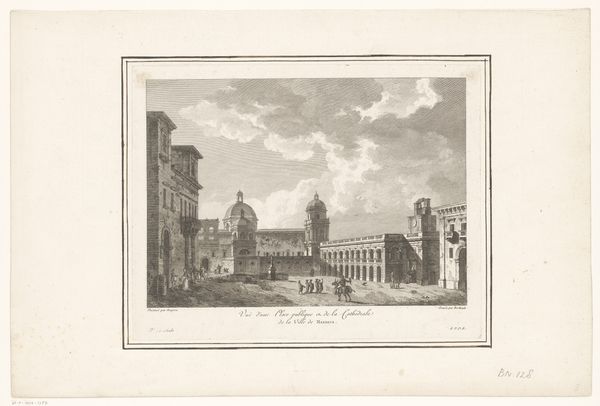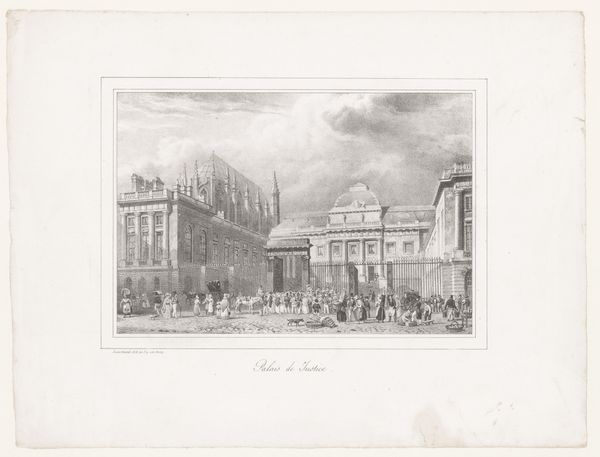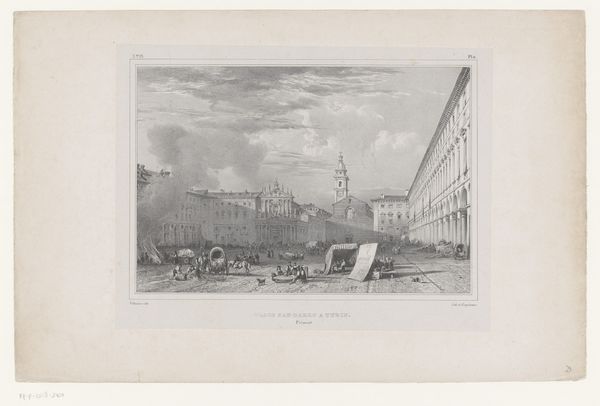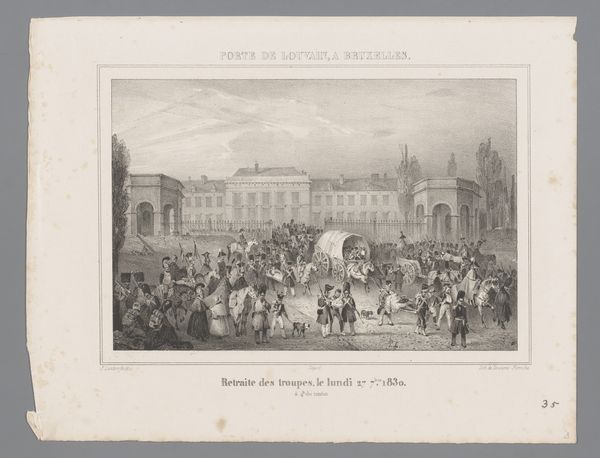
Zicht op de façade van koning Frans I van het Kasteel van Blois 1853 - 1856
0:00
0:00
Dimensions: height 291 mm, width 434 mm
Copyright: Rijks Museum: Open Domain
Léon Auguste Asselineau created this lithograph of the façade of King Francis I's castle of Blois sometime in the 19th century. The architectural form dominates, rendered in precise detail with subtle gradations of light and shadow. The overall effect is one of stately grandeur, evoking a sense of historical weight and permanence. Asselineau's emphasis on line and form invites us to consider the print's underlying structure. The façade, with its repetitive sequence of windows and ornate detailing, suggests a semiotic system of signs, where each element contributes to the overall message of royal power and cultural refinement. Yet, the subtle irregularities in the stonework and the play of light across the surface introduce a degree of ambiguity, hinting at the complexities and contradictions inherent in any system of representation. The artwork stands as a testament to the enduring power of architectural form to shape our perceptions and understanding of history. Its meaning is not fixed but constantly shifting in response to new interpretations and perspectives.
Comments
No comments
Be the first to comment and join the conversation on the ultimate creative platform.
